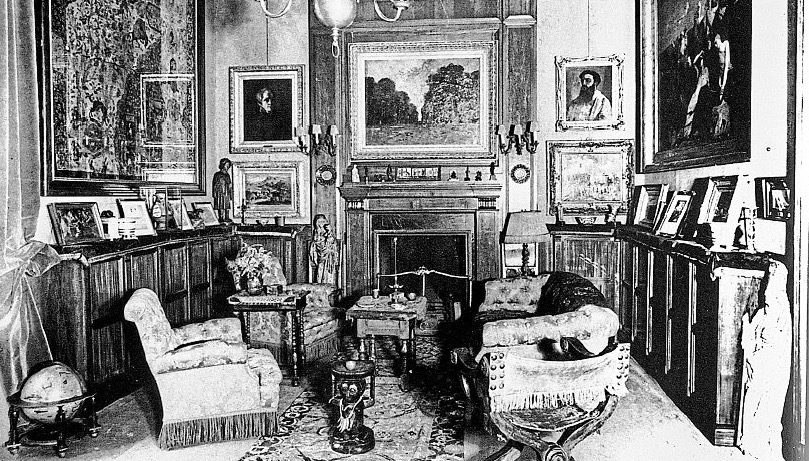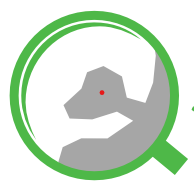An Austrian searches in the Erz Mountains for an art treasure hidden by the SS
Berliner Zeitung, No. 183, Tuesday, 10 August 2021 – Page 24
Author: Andreas Förster
We have left the car at the bottom of the road to Deutschkatharinenberg and are now trudging up the narrow forest path. Kupferleite, An der Hohle and Höllenweg are the names of the paths here in the German-Czech border region that lead up to the Weißer Stein (White Stone) with its mysterious pond and quarry stones, presumably the old overburden of a long-forgotten mine. At some point, in a small clearing, Burkhard List stops, looking around a little breathlessly. “Here below us,” says the 72-year-old in a deep, full voice, “we suspect the tunnels that were converted by the SS into a depot for looted art treasures before the end of the war. And there, I’m sure, is also a part of the lost art collection of the Hungarian Baron Ferenc Hatvany.”
List comes from Austria and has worked as an investigative journalist for decades. He was involved in uncovering the so-called Noricum affair about illegal arms deliveries by the VOEST corporation to Iraq and Iran, has researched Nazi silos in the Austrian army and a CIA school in Panama, reported on the CDU donation scandal and on the NSU in Germany. Now he wants to successfully complete his last journalistic project, on which he has been researching for more than 20 years and about which he has written books – the search for the art treasures of Baron Hatvany stolen by the SS. Crowdfunding project List has started a crowdfunding project for the project, with which he wants to raise the money for the further scientific survey of the old mine in the Ore Mountains and the subsequent opening of the art depot suspected to be there via the portal kickstarter.com. To this end, he has posted a good seven-minute film on the internet documenting the research he has done so far. “I am sure,” says List, “that in the next two years we will reach our goal and find a large part of the Hatvany collection here in the mountain.”
The art collection of the Jew Ferenc Hatvany, born in Budapest in 1881 as the scion of a fabulously rich Hungarian industrialist family, was one of the most extensive and valuable in Europe. Since the end of the war, however, large parts of the collection of paintings, sculptures, porcelain and precious silk carpets have been considered lost. The number of paintings in the baron’s Budapest city palace alone was estimated at at least 800, half of which were masterpieces by Cézanne, Degas, Manet, Monet, Renoir, Tintoretto, Courbet, Titian and El Greco, among others. After the German invasion of Hungary in March 1944, Hatvany, who died in 1958, managed to escape, but his art collection was packed by the SS and sent west by truck and train. The SS stored part of the collection in a salt mine in Altaussee, Austria, where it was recovered by the US Army at the end of the war. For the rest of the collection, however, the trail is lost in Germany. Burkhard List found out during his years of research that at the end of 1944 a train with parts of the Hatvany collection had set off from Rosenheim in Bavaria for Berlin. On the way, however, several wagons were uncoupled and diverted. According to List, two of these wagons ended up in the Ore Mountains and were unloaded at Deutschkatharinenberg station. “The SS then used trucks to drive the paintings and other art objects over the Hell Road to a disused mine that had been converted into an underground depot by forced labourers in the months before,” List recounts. “After storage, the entrances to the gallery were blown up.” Even today, you can find rocks around the entrance to the tunnel that List and his people suspected were there, as is common after rock blasting.
Over the past two years, List, together with mining experts and scientists, has drilled boreholes to a depth of 20 metres and carried out extensive measurements with radar, laser scanners and drones around the area at the White Stone. The aim was to record geological stratifications and delimit the area of the former mine. This is because documents on this mine, which probably dates back to the 16th century, are missing from the old mining archives. “This is unusual and could be an indication that the old plans were deliberately removed from the archives in connection with the expansion of the gallery by the SS,” says List.
Scans with drones
The journalist is decisively supported in this surveying work by the Viennese scientist Wolfgang Neubauer. Neubauer, a member of the Austrian Academy of Sciences, heads the Ludwig Boltzmann Institute for Archaeological Prospection and Virtual Archaeology in Vienna and specialises in old mining. Through his measurements, he says, several old air shafts were located that served to ventilate the tunnel system running over an area of about ten hectares. The measurements with georadar are to be continued this year.
In February and March, further scans of the area with drones are planned, as well as drillings in the area of the suspected entrance to the deposit. It will also be investigated what function a mysterious, apparently artificial pond of about twelve metres in diameter could have in the area for the suspected mine. After evaluating all the data, a 3D model of the mountain will then be created in preparation for opening the old mine. To finance all this work, List now wants to raise the funds via crowdfunding. Burkhard List is optimistic. For years he has meticulously collected documents and witness statements that, in his view, point to the hiding place in the mountain above Deutschkatharinenberg. “The SS put the art collection there in the mountain,” says List, “and I’ll get it out again.”




